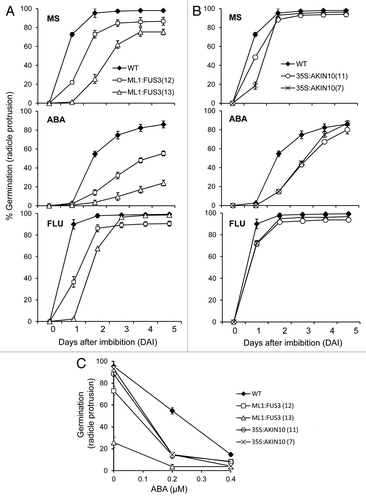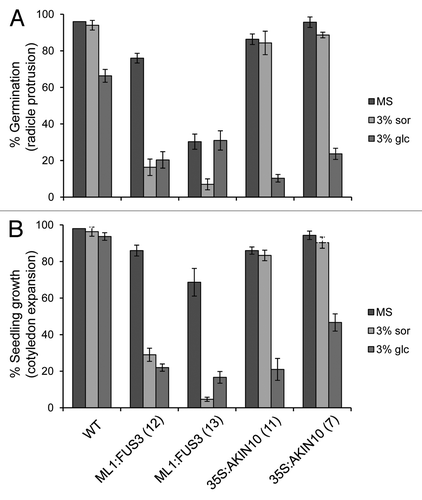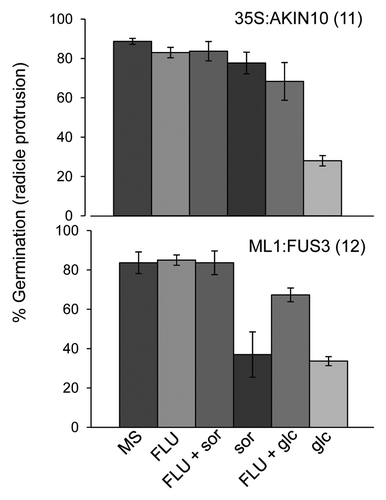Figures & data
Figure 1. Overexpression of FUS3 or AKIN10 leads to ABA hypersensitivity and delayed germination, which is partly dependent on de novo ABA synthesis. Germination (radicle protrusion) kinetics of seeds from WT and two independent lines of ML1:FUS3 (A) or 35S:AKIN10 (B) on MS media or MS supplemented with 0.2 μM ABA or 10 µM fluridone (FLU). WT germination is significantly higher (p < 0.01) than 35S:AKIN10 on 10 µM FLU at 2 d after imbibition (DAI). (C) ABA dose-response curves for WT, ML1:FUS3 and 35S:AKIN10 seed germination (radicle protrusion) 2 d after imbibition. WT germination is higher (p < 0.001) than ML1:FUS3 and 35S:AKIN10 at 0.4 µM ABA. Averages from 3 experiments ± SD are shown. 100–150 seeds were used in each experiment.

Figure 2. Overexpression of FUS3 or AKIN10 leads to different responses to sugar during seed germination and seedling growth. (A) Germination (radicle protrusion) of WT, ML1:FUS3 and 35S:AKIN10 seeds 2 d after imbibition on MS ± 3% sorbitol (sor) or 3% glucose (glc). (B) Seedling growth (cotyledon expansion) of WT, ML1:FUS3 and 35S:AKIN10 seeds 4 d after imbibition on MS ± 3% sor or 3% glc. Averages from 3 experiments ± SD are shown. 100–150 seeds were used in each experiment.

Figure 3. Osmotic stress hypersensitivity of ML1:FUS3 seeds and glucose hypersensitivity of 35S:AKIN10 seeds are both partially dependent on de novo ABA synthesis. Germination (radicle protrusion) of 35S:AKIN10 and ML1:FUS3 seeds 2 d after imbibition on MS, 10 µM fluridone (FLU), 3% sorbitol (sor) ± 10 µM FLU, and 3% glucose (glc) ± 10 µM FLU. Averages from 3 experiments ± SD are shown. 100–150 seeds were used in each experiment.
